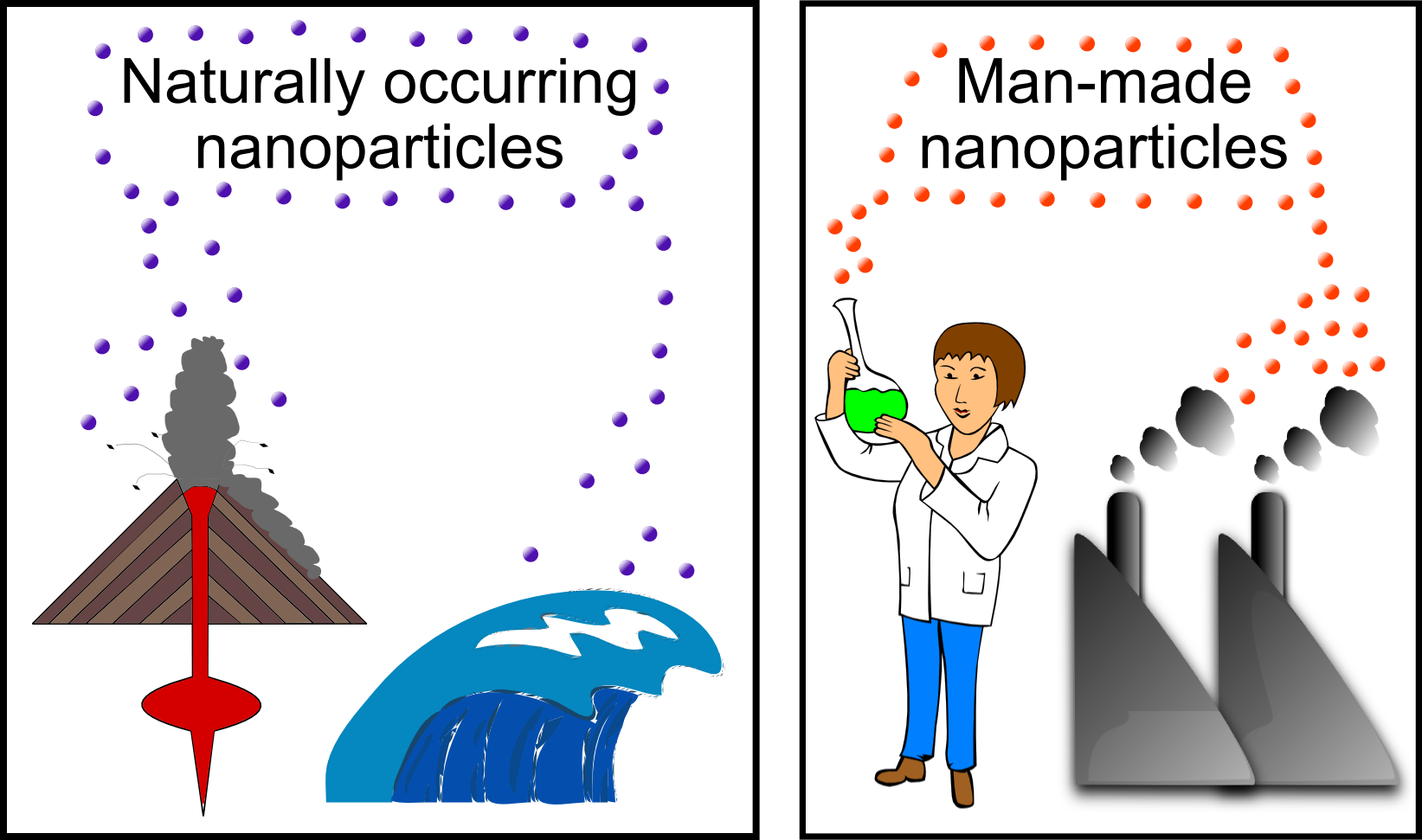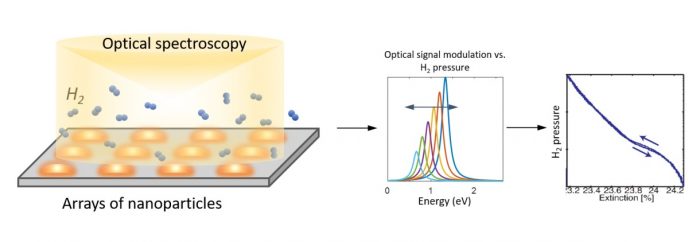Know More About What are Nanoparticles?
Nanoparticles are the origin of Nano science and technology. With the help of Nanostructure, we can go to the beginning of any cause. We can correct them from the base with the study of nanoparticles. It has a large number of applications in the medical field for the treatment of dangerous diseases. More research at the nano-level will take the treatment level to an advanced degree in the upcoming years. Definition
We can define nanoparticles as a set of substances which have at least one dimension less than 100 nanometres in size. Size of a nanometre is about one-millionth of a millimetre. Can you imagine that it is about 100,000 times smaller than the diameter of a human hair? It is a topic of interest in many fields including magnetic, optical, electrical etc., Looking into its properties, researchers have created the potential for implementing it in the field of electronics, medicine, and other areas. Where can we find nanomaterials?
Nanoparticles have two origins; it either occurs naturally or it can be prepared synthetically also. Human-made preparation is a matter of interest from the beginning. The particles at the base level are modified and mixed up by using engineered nano techniques. Synthetically they exist daily using products like sunscreens, cosmetics, sporting goods, stain-resistant clothing, tyres, electronics. It also exists in other everyday items like diagnostic medicines, imaging and drug delivery methods. Nanoparticles are also known as anthropogenic nanoparticles. It is generally divided into two general categories:
Incidental nanoparticles
The source of synthesis of these nanoparticles is from the by-products of human activities. Its shapes and sizes are poorly. It may constitute of different elements. It shows existence in everyday activities like running diesel engines, starting a fire and large-scale mining. Engineered Nanoparticles
These types of nanoparticles are designed at the molecular level synthetically. Researchers can take advantage of their small size and novel properties for using it conventionally. The range of existence is extensive in commercial products used in everyday life like sunscreens, cosmetics, wrinkle-free textiles, electronics, paints and varnishes. In sunscreen, it plays the role of novel UV-blockers. It is also used in glass bottles and making of windows to prevent damaging of the product from sunlight. Sports equipment like long-lasting tennis balls, butyl-rubber and nano-clay composites also contain nanoparticles. The common characteristics of Engineered Nanoparticles are:-
Nanomaterials have a lot of commercial uses. It is available from several years or decades, and humans have been taking maximum advantage of using it. For example, Nanoscale titanium dioxide has a vast application in the field of cosmetics. Self-cleaning windows and preparation of sun-burn creams. Nanoscale silica is used for manufacturing of colloidal silica as an opacifier. It is being used as filler aids for a different range of products also in dental fillings. History of Nanoparticles
The history of Nanoparticles began after the big bang theory. It forms from the early meteorites in the universe. Further, it developed in many other nanostructures like skeletons, seashells etc. Old human fires or natural fires showing exothermic experiments like a forest fire or human-made fire. The scientific story of nanomaterials began much later. One of the first scientific experiment of nanoparticles took place within the colloidal gold particles. Michael Faraday discovered it before 1857. A lot of investigation for Nanostructured catalysts took more than 70 years.
Today all the nanophase engineers are working to expand the use in large number. The rapidly growing Nanoparticles have various polymeric structural and functional studies manufacturing it from inorganic and organic, allows manipulating catalytic, mechanical, optical, electric, magnetic and electronic functions. Nowadays the nanoparticles are fused into a bulk-like material and embedded inside the compact liquid or solid matrix materials like nanophase silicon. The manufacturing techniques of nanophase silicon differs a lot from ordinary silicon. Both have different physical and electronic properties. It acts like a macroscopic semiconductor for creating new devices. It has a high performance on quantizing glass than standard glasses. Properties of Nanomaterials
Nanomaterials have different structural features in the arrangement of atoms and bulk materials. Most of the micro structured nanoparticles have some common characteristics. The properties go on changing by just a little difference in their size and arrangement. So, dimensions of nanoparticles play a significant role in determining the property. These fluctuations of the properties among the nanoparticles are due to their sizes. The following characteristics are responsible for determining the properties of nanoparticles:-
Surface property
Dimensions of nanoparticles are tiny, so they bear a considerable surface area to volume ratio. It makes them more dependent on the surface — mainly when categorizing it concerning the length of other nanoparticles. When the surface area exposed varies then the entire surface properties get affected. Thus, these properties help in the enhancement and modification of bulk materials. For example:-
Energy bandInside the nanoparticles, its energy band structure and charge carrier density can also influence the bulk particles differently. For example, high-density electron storage is possible using quantum dot devices that use lasers and light-emitting diodes (LED).
Optical properties
It is one of the most useful features of nanoparticles. It has a wide range of applications in visual science. Nanoparticles are helpful to in the optical experiment. Thus, used in the manufacturing of various optical detectors, laser beam, sensor, and imaging. Applications in the display, solar cell, photo catalysis and photo electrochemistry are also very prevalent. The shape of nanoparticles plays a dramatic role to choose which Nanoparticles to pickup for the analysis of optical instrument and experiments. This property of nanoparticles helps to know the difference in the optical properties of semiconductors and metals nanoparticles. For example: - With the help of CdSe semiconductor, the change in size alters, and optical properties of the nanoparticles can be easily determined. When metal nanoparticles are enlarged, a change in their optical properties takes place. For example, in gold nano spheres, the visual characteristics changes with increasing the size. A nano difference in sizes gives some unique characteristics. Electrical Properties
We all know that every particle has some electrostatic property. Thus, nanoparticles also show a wealth of conduction differently. This electrical conductivity plays a significant role in nanotubes, nano rods, carbon nanotubes, photoconductivity of nano rods etc. It can be suitable for demonstrating the conductive properties by thinning of nanowires and flow of current at a constant voltage. On decreasing the diameter, the electron waves increase at a steady rate. Mechanical Properties
It is the property of nanoparticles that deals with the bulkiness of ceramic materials. In the automated method, we determine the grain size, porosity, plasticity and polymer composition of the nanoparticles. It also includes the property platelets, carbon nanotube-based and other mechanical properties composites. High-density macroscopic nanoparticles of size range below 100 nm are very problematic to produce. It also deals with creating of nanoparticles by sintering or pressing and polymeric properties. If the polymeric nanoparticles or nanotubes have plastic-deformed metals, then they are much useful, but giant grain size lattice is not suitable for applications. Experimental studies of nanoparticles are needed to know the mechanical properties of bulk nanomaterials. Doing experimentations for a longer time will allow us to know about the accuracy, grain sizes and porosities of the nanoparticles. So, model calculations and dynamic molecular studies are essential to understand the mechanical properties of these materials. Magnetic properties
Gold and platinum are non-magnetic in their large structure. But, changing them to the nano version makes them behave like magnetic particles. By taking advantages of these characteristics, several studies and analysis are available. The chemical interaction of these metals in bulk structure is very different from that in their Nanostructures. Thus we can modify the physical properties of any substance by going to their nano-forms and observing their behaviour in nano stage. The reason behind showing such behaviours is sizeable spin-orbit coupling. At nano stages, the metals show anisotropy. The changes in their orbiting structure make them behave like ferromagnetic particles. Some metals show magnetic behaviour on the temperature difference. For example: - nanoparticles of thiol and silver show magnetic behaviour on room temperature. Thus sizes as well as surrounding plays an essential role for the nano-behaviour. Nanoparticles- How it works?To know the type of nanoparticles, we must have full knowledge of the field where we are going to use the nanoparticles. The main thing is to understand the molecular arrangement of the bulk particles. Looking into the properties of the nanoparticles, we can choose what type of action is preferred. For example: - If we are dealing with treating a deficiency disease of a particular organ, then we can't give a medication that will increase the concentration of drug in the whole body. But our motto is to treat the deficiency by increasing the active constituents on that particular organ. Thus we choose the type of nanoparticles that will go and release the chemicals for treating the deficiency. For knowing the mechanism of action, we can't assume a single method. It is not true that every nanoparticle has the same mechanism of action. The characteristic of every nanoparticle is different. So looking into the type of requirements we choose the best-suited particle for the targeted treatment. Dealing with quantum mechanics is the most challenging aspects of Nanoparticles. The laws regarding quantum mechanics are very different from classical physics. The behaviour of substances change at their subatomic level. Thus, it isn't elementary to assume the result and working of any nanoparticles looking into its physical characteristics. In such cases, before implementing nanoparticles to any work, the complete role of the implementing nanoparticles must be known to get a good result. From classical physics, it is impossible to walk on wall and teleport to the other side. But in Nano-level, the electrons can do it. This mechanism is known as electron tunnelling. A different and unexpectable result is waiting after experimentation. Thus, we can't predict the proper device without knowing the exact physical and chemical properties. |












.jpg&ts=20120524123833&ri=640)
